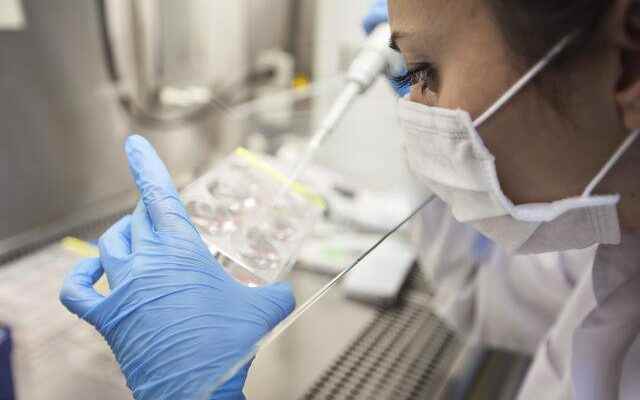The dizzying developments in IVF treatments in the last 40 years continue to provide hope for couples with infertility problems.
Acıbadem University Atakent Hospital Gynecology and Obstetrics Specialist Assoc. Dr. Nadiye Köroğlu stated that millions of healthy babies have been born thanks to in vitro fertilization treatment. These factors also negatively affect the chances of success of the treatment. Therefore, it is very important for couples who want to become parents to question the accuracy of the information they have obtained from their environment or virtual environment and to apply to the doctor in a timely manner.
Gynecology and Obstetrics Specialist Assoc. Dr. Nadiye Köroğlu told about the wrong information that is thought to be true in the society about IVF treatment; important warnings!
The chance of success on the first try is low: WRONG!
FACT: The chance of success in IVF treatment; It varies depending on many factors such as the age of the expectant mother, the quality of the sperm and egg. According to scientific evidence; The chance of success on the first try is around 50-60%. The higher the number of attempts in IVF, the higher the chance of pregnancy. So much so that 50 percent of IVF treatment occurs in the first attempt, 65-70 percent in the second attempt, and 80 percent in the third attempt.

Hospitalization required during treatment: FALSE!
FACT: Contrary to popular belief, IVF treatment processes do not require hospitalization. Egg collection is a procedure performed under anesthesia and you are discharged from the hospital after 3-4 hours of hospitalization. After the embryo transfer process, it is enough to rest for 2-3 hours in the hospital. Egg follow-up processes are also performed in the form of outpatient clinic controls in IVF treatment.

Freezing of excess embryos is unnecessary: WRONG!
TRUTH: Gynecology and Obstetrics Specialist Assoc. Dr. Nadiye Köroğlu, pointing out that freezing embryos is an important practice that gives patients an extra chance of pregnancy, continues as follows: “Recovering half of the embryos frozen in the past as healthy has caused this misconception. However, the new methods that we can apply together with the technological developments have ensured that almost all of the frozen embryos are recovered in a healthy way. At this point, the difference in success between frozen embryos and fresh embryos has closed. The limited number of embryos transferred in our country also increases the advantageous aspects of the embryo freezing method.”

IVF treatment causes early menopause: FALSE!
FACT: Another erroneous information about IVF treatment is that this treatment causes depletion of ovarian reserves and as a result, premature menopause. Assoc. Dr. Nadiye Köroğlu stated that the stimulation of the ovaries in IVF treatment does not lead to early menopause as it does not reduce the egg reserves, and said, “In vitro fertilization treatment aims to enlarge the existing eggs, so there is no decrease in their number.” says.

Congenital anomaly risk increases in babies born with IVF: FALSE!
FACT: Assoc. Dr. Nadiye Köroğlu, emphasizing that the risk of congenital anomaly in babies born with IVF treatment is not different from babies born from naturally obtained pregnancies, “However, the risk of congenital anomaly may increase in cases where the age of the woman is over 35 or in cases of a known genetic disease. In addition, more congenital anomalies can be seen in cases where intracytoplasmic sperm injection is made due to very low sperm count.” says.
Twins or triplets happen with IVF treatment: FALSE!
FACT: Compared to natural pregnancy, multiple pregnancy is more common in IVF treatment. However, it is possible to prevent multiple pregnancy with the number of embryos transferred. Gynecology and Obstetrics Specialist Assoc. Dr. Nadiye Köroğlu emphasized that single and healthy pregnancies can be achieved with the transfer of single and high quality embryos, “However, although some couples want multiple pregnancies, multiple pregnancies can be dangerous for the health of mothers and babies. In order to prevent these dangers, the number of embryos transferred in our country has been limited. he speaks.
The success rate in IVF treatment is 100 percent: FALSE!
FACT: Success rate in IVF treatment; It varies depending on many factors such as the age of the mother-to-be and the cause of infertility. In women under the age of 35, the live birth rate in the first IVF trial is between 40-50%.
The age of the woman is unimportant in IVF treatment: WRONG!
FACT: As women age, there are changes in reproductive functions. So much so that 25-30 years of age are the most fertile, while after the age of 35, there is a decrease in fertility. Therefore, while the probability of getting pregnant between the ages of 25 and 30 is around 50 percent, this rate drops to around 15 percent after the age of 40. With IVF treatment, the chance of pregnancy is almost non-existent in women aged 45 and over.
Cesarean section should be given in IVF pregnancies: FALSE
FACT: Being pregnant with IVF is not a reason to have a cesarean delivery. If the conditions are suitable, normal birth can be done.
IVF treatment is a long and painful method: WRONG!
FACT: Contrary to popular belief, thanks to the developments in IVF treatment, problems such as pain and bloating are no longer experienced, and the treatment period is completed in 2-2.5 weeks.
